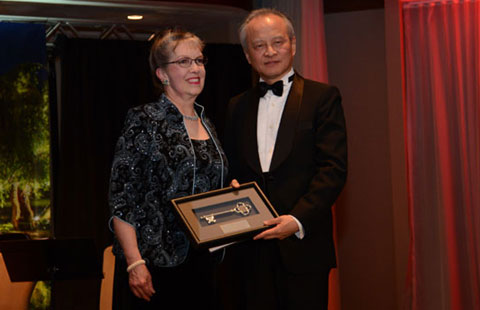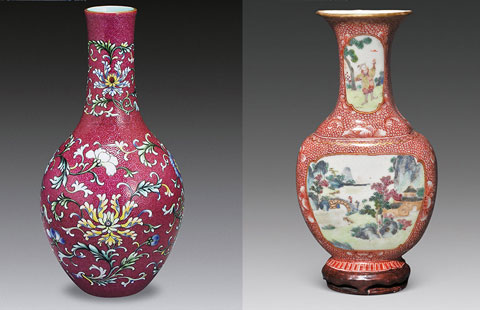Developing with global vision
Updated: 2014-12-26 07:52
By Zhao Minghao(China Daily)
|
||||||||
The Chinese premier also participated in the Third Meeting of Heads of Government of China and Central and Eastern European Countries, or the "16+1" meeting, in Serbia in mid-December. The participating countries agreed to enhance their connectivity and vowed to continuously improve international railway container transportation between China and Europe, and facilitate customs clearance, create new logistics routes and hubs, and strengthen cooperation in infrastructure development.
During Li's stay in Belgrade, China, Serbia, Hungary and Macedonia agreed to build an express rail link between the Greek port of Piraeus in the south and the Hungarian capital of Budapest in the north. As Central and Eastern European countries need to adjust their economic structures and upgrade their infrastructure, and China has competitive advantages in device manufacturing and infrastructure construction, their win-win cooperation can be expected.
Having returned from Europe, Li visited Thailand and attended the fifth summit of the Greater Mekong Subregion (GMS) Economic Cooperation, which groups Cambodia, China, Laos, Myanmar, Thailand and Vietnam. Beijing hopes to propel interconnection and infrastructure construction in the region. China, he said, will offer the five neighboring countries opportunities to share the Mekong River funds and production capacity aid so as to help poverty reduction, increase productivity and promote connectivity.
According to estimates by the Asian Development Bank, Asia needs roughly $800 billion a year for infrastructure investment before 2020. China, with foreign reserves as high as $3.8 trillion, will play a more active role in advancing connectivity and infrastructure development in Asia.
In November, China announced it was establishing a Silk Road Fund of $40 billion, in addition to being the main injector of funds into the Asian Infrastructure Investment Bank. And Beijing has already made it clear that the new mechanism will supplement, not replace, the old ones.
These moves by China have three distinct characteristics. First, Chinese decision-makers have noticed the concerns of other countries about becoming economically reliant upon China, so instead of making decisions for them, China is learning more about their development needs and trying to meet these needs.
Second, China is participating in international and sub-regional multilateral organizations and endeavoring to seek shared interests with other countries so as to build partnerships.
Third, decision-makers in Beijing have put more emphasis on adopting the best practices of international organizations. In 2013, the Ministry of Commerce published a guidance book on overseas investment that requires Chinese enterprises to better shoulder their social responsibilities, protect the environment, and hire more local staff abroad.
Building a global network of partnerships is an essential way of realizing the country's interests. Chinese diplomats have claimed that its partnerships pursue mutual benefits and win-win cooperation and focus on inclusiveness rather than exclusiveness, a fundamentally different approach from Washington's de facto global network of allies, which features obedience and alignment. The Chinese leadership needs to master the art of seeking companions without building alliances.
The author is a researcher at the Chahar Institute, a Beijing-based independent think tank.

 Music at her fingers
Music at her fingers
 Across America Over the Week (Jan 16 - Jan 22)
Across America Over the Week (Jan 16 - Jan 22)
 Spend Chinese New Year in style
Spend Chinese New Year in style
 Ili river valley becomes a popular destination for swans
Ili river valley becomes a popular destination for swans
 Philip Ma: from scientist to businessman
Philip Ma: from scientist to businessman
 Birmingham's Spotlight on China dinner
Birmingham's Spotlight on China dinner
 How to distinguish doucai, wucai, Famille-rose and enamel porcelain
How to distinguish doucai, wucai, Famille-rose and enamel porcelain
 Xinjiang lake in bumper fishing season
Xinjiang lake in bumper fishing season
Most Viewed
Editor's Picks

|

|

|

|

|

|
Today's Top News
Houston's SW Chinatown
China to focus on reforms, opening of capital market
Slowdown brings new risks to banks
Trade group calls for BIT
Market status for China is 'political' issue
Birmingham's Spotlight on China dinner
Bank takes renminbi-clearing seriously
Traditional Garb
US Weekly

|

|








